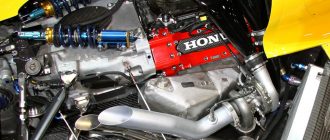What Type of Engines Do F1 Cars Use?
Introduction
Formula 1 (F1) cars are the pinnacle of motorsport engineering, and their engines are no exception. These engines are incredibly powerful and efficient, and they are constantly being developed to improve performance.
Engine Specifications
F1 engines are all 1.6-liter turbocharged V6 engines. They are required to rev to a maximum of 15,000 rpm, and they can produce up to 1,000 horsepower. The engines are also very efficient, and they can achieve a thermal efficiency of up to 50%. This means that they can convert 50% of the fuel they burn into power.
Engine Design
F1 engines are designed to be as light and compact as possible. They are also designed to be very durable, as they must withstand the extreme forces generated by F1 cars. The engines are made from a variety of materials, including aluminum, titanium, and carbon fiber.
Engine Components
The main components of an F1 engine include the following:
- Cylinder block: The cylinder block is the main structural component of the engine. It houses the cylinders, pistons, and crankshaft.
- Cylinder head: The cylinder head sits on top of the cylinder block and contains the valves, camshafts, and spark plugs.
- Pistons: The pistons move up and down inside the cylinders, compressing the air-fuel mixture and generating power.
- Crankshaft: The crankshaft converts the reciprocating motion of the pistons into rotary motion.
- Turbocharger: The turbocharger is a device that uses exhaust gases to spin a turbine, which in turn compresses the air-fuel mixture. This increases the power output of the engine.
Engine Performance
The performance of an F1 engine is determined by a number of factors, including the following:
- Displacement: The displacement of an engine is the volume of air-fuel mixture that it can draw in during one combustion cycle.
- Compression ratio: The compression ratio is the ratio of the volume of the cylinder when the piston is at the bottom of its stroke to the volume of the cylinder when the piston is at the top of its stroke.
- Boost pressure: The boost pressure is the pressure of the air-fuel mixture that is forced into the engine by the turbocharger.
- Fuel flow rate: The fuel flow rate is the amount of fuel that is injected into the engine per minute.
Engine Regulations
The FIA, the governing body of Formula 1, has strict regulations in place to govern the design and performance of F1 engines. These regulations are designed to ensure that the engines are fair and competitive.
Conclusion
F1 engines are the most powerful and efficient engines in the world. They are constantly being developed to improve performance, and they play a vital role in the success of F1 cars.




